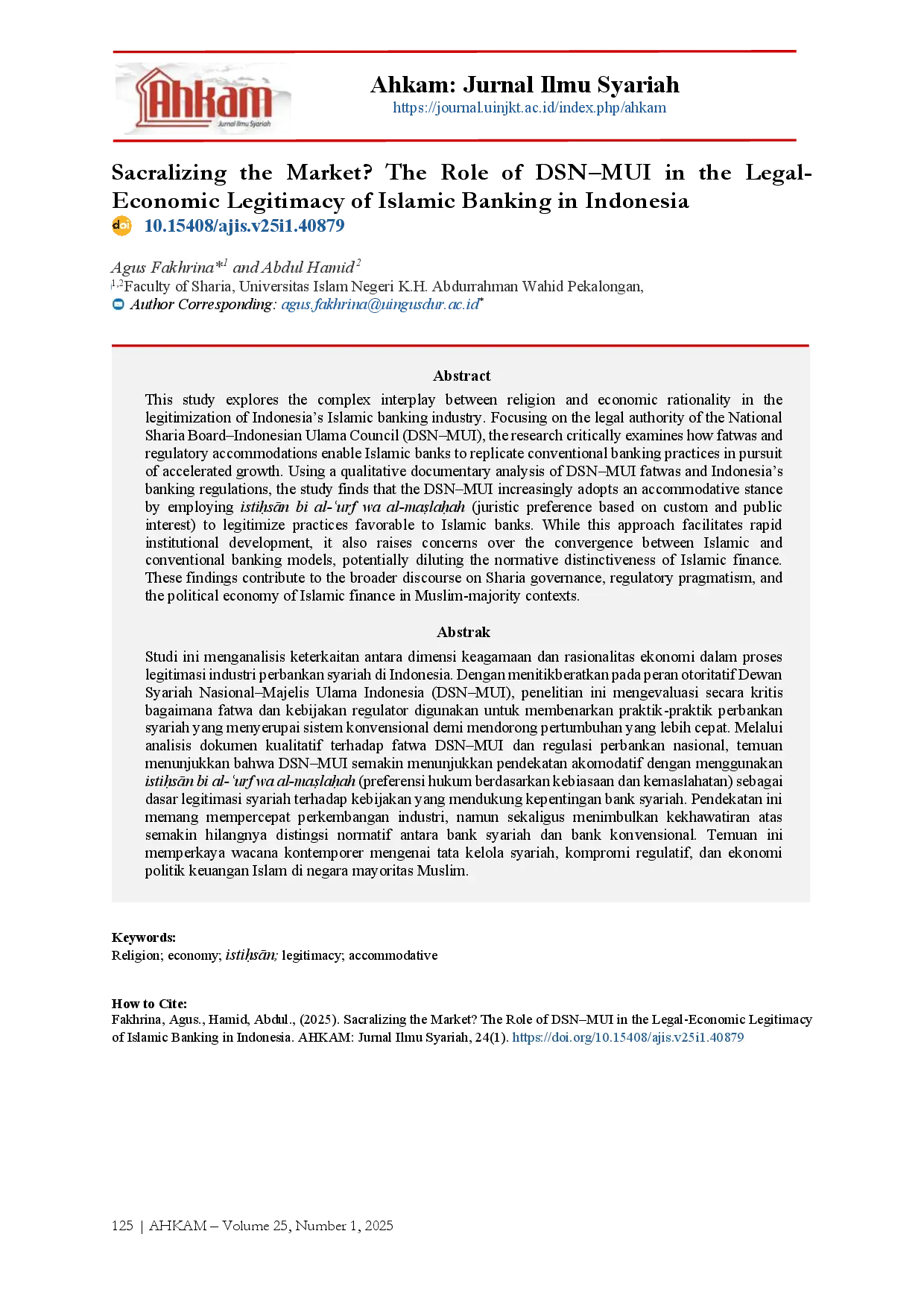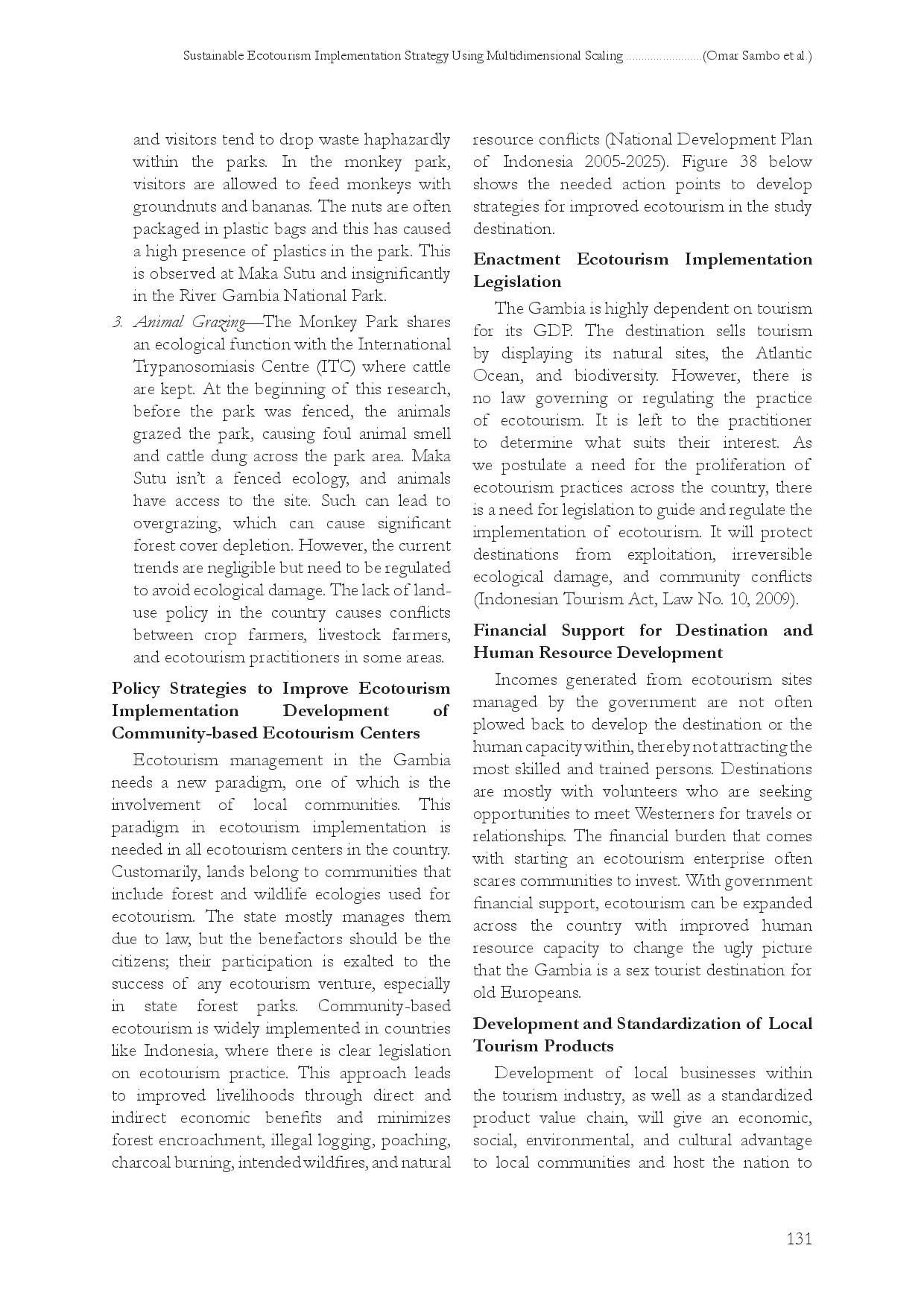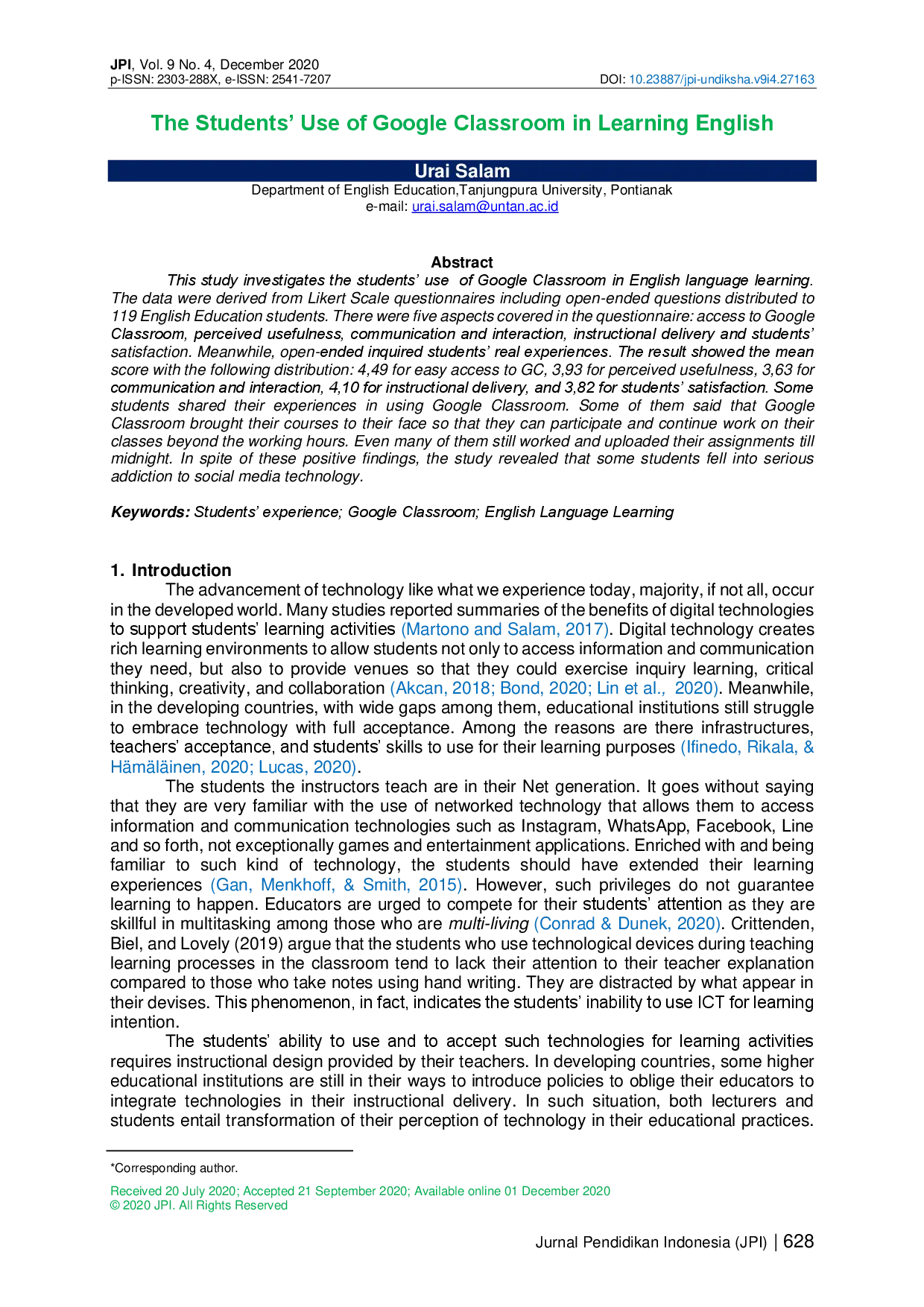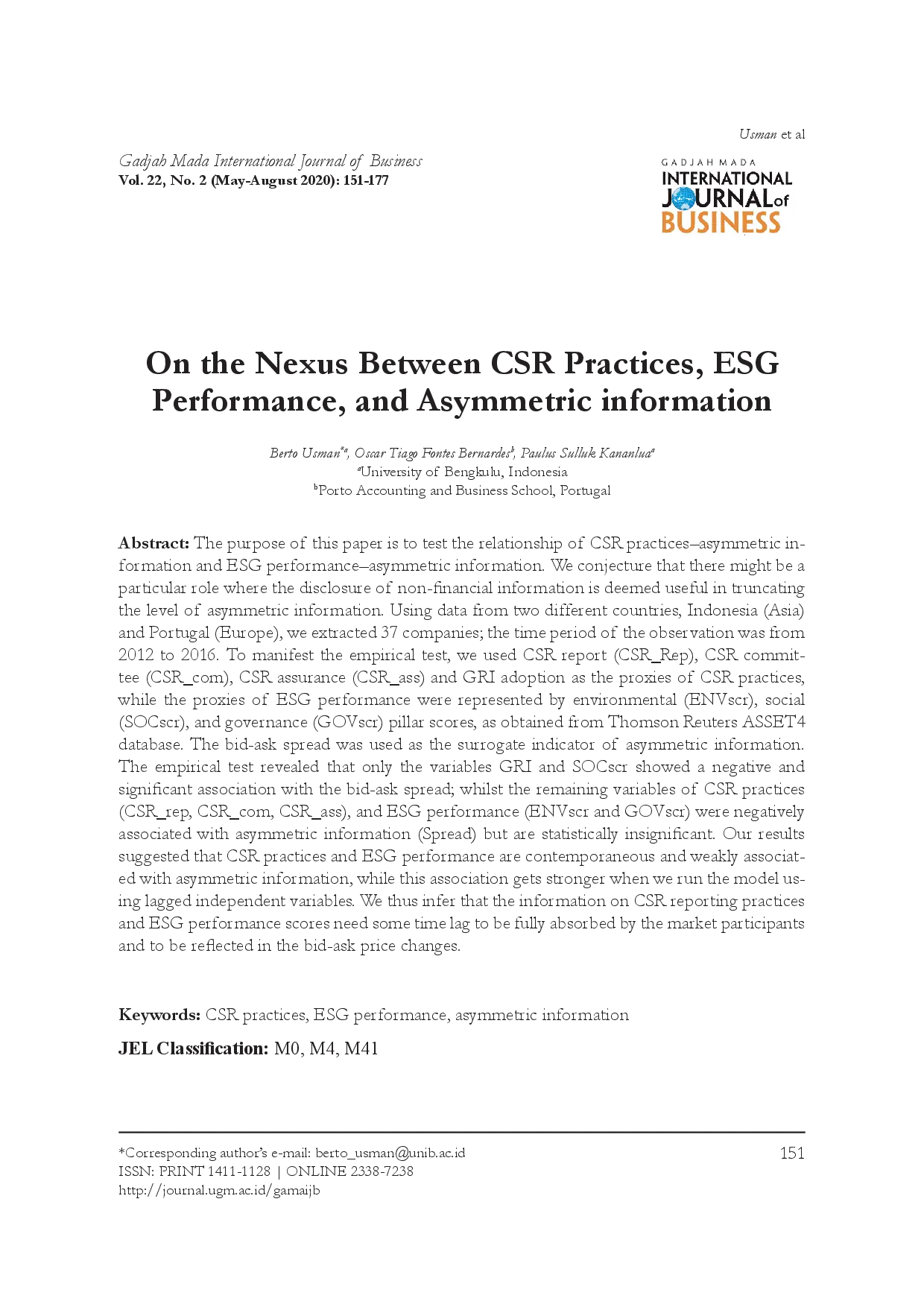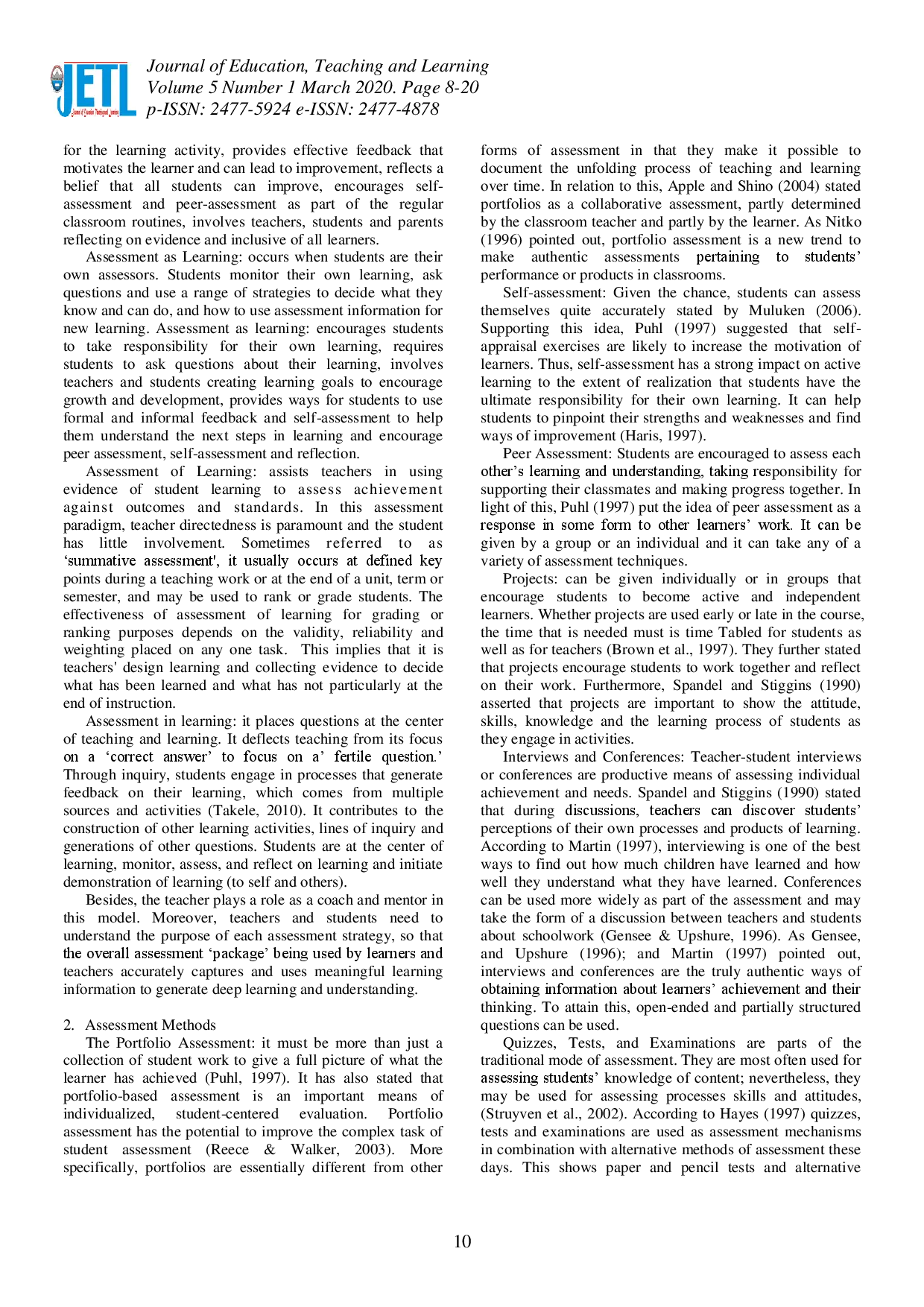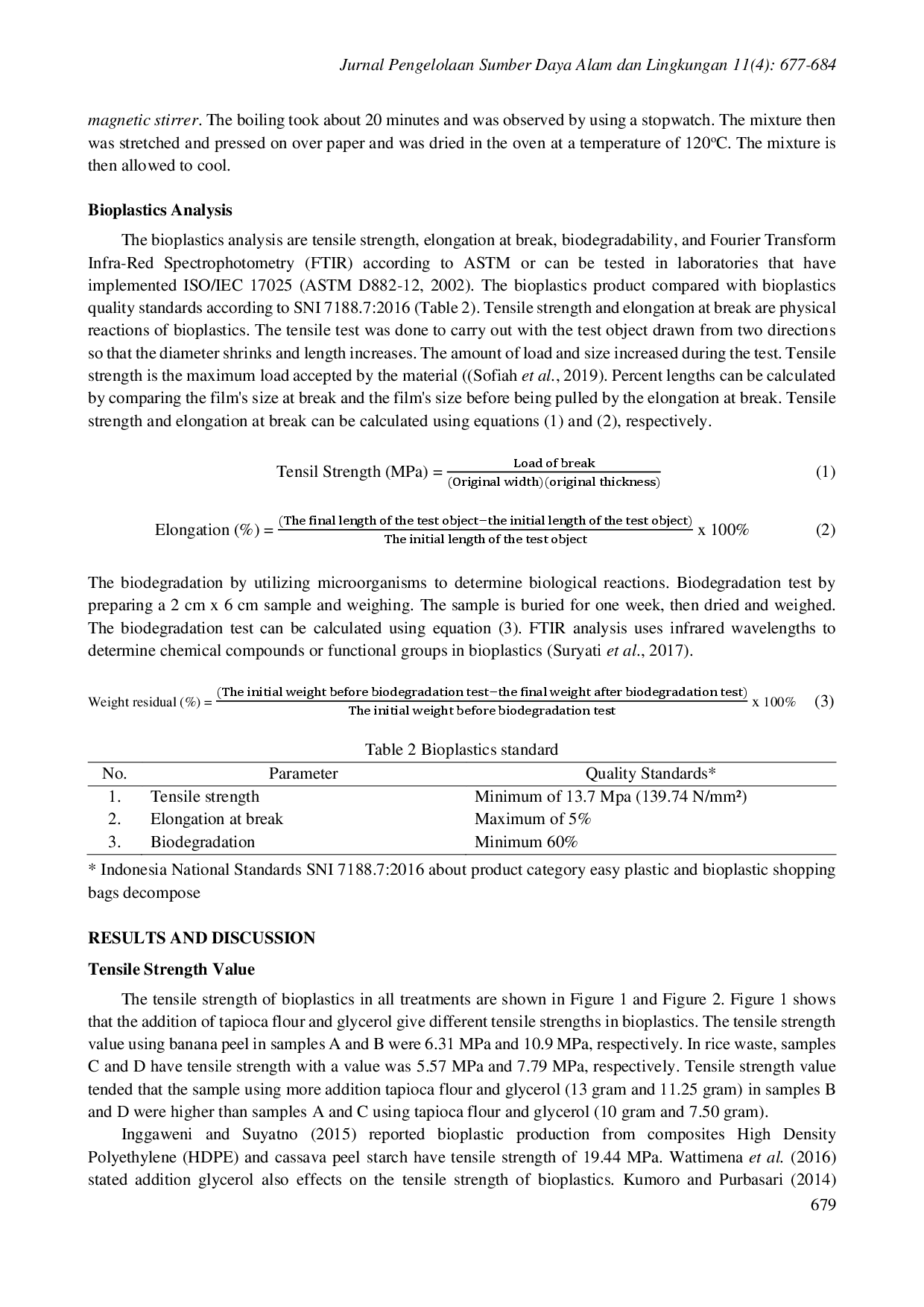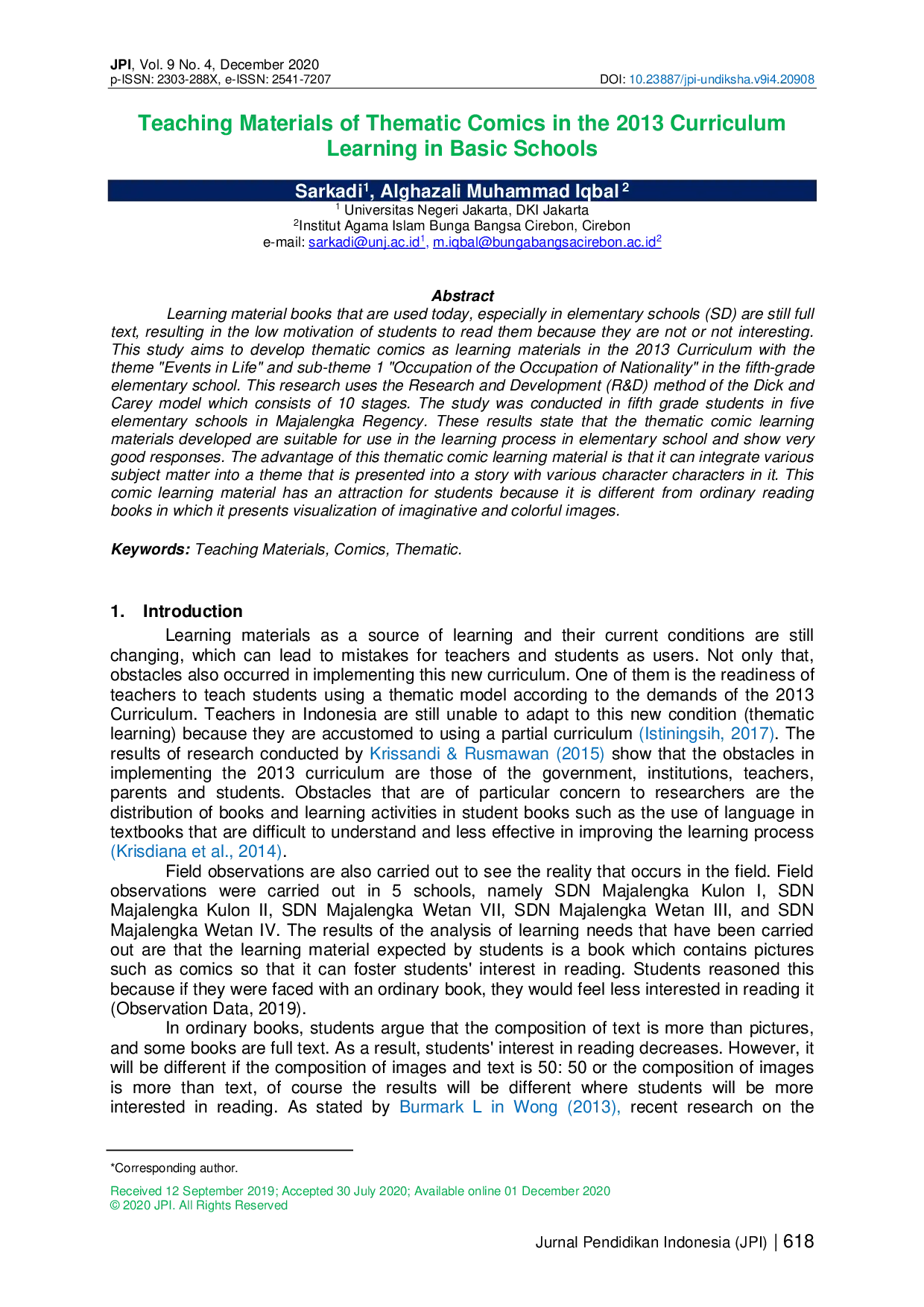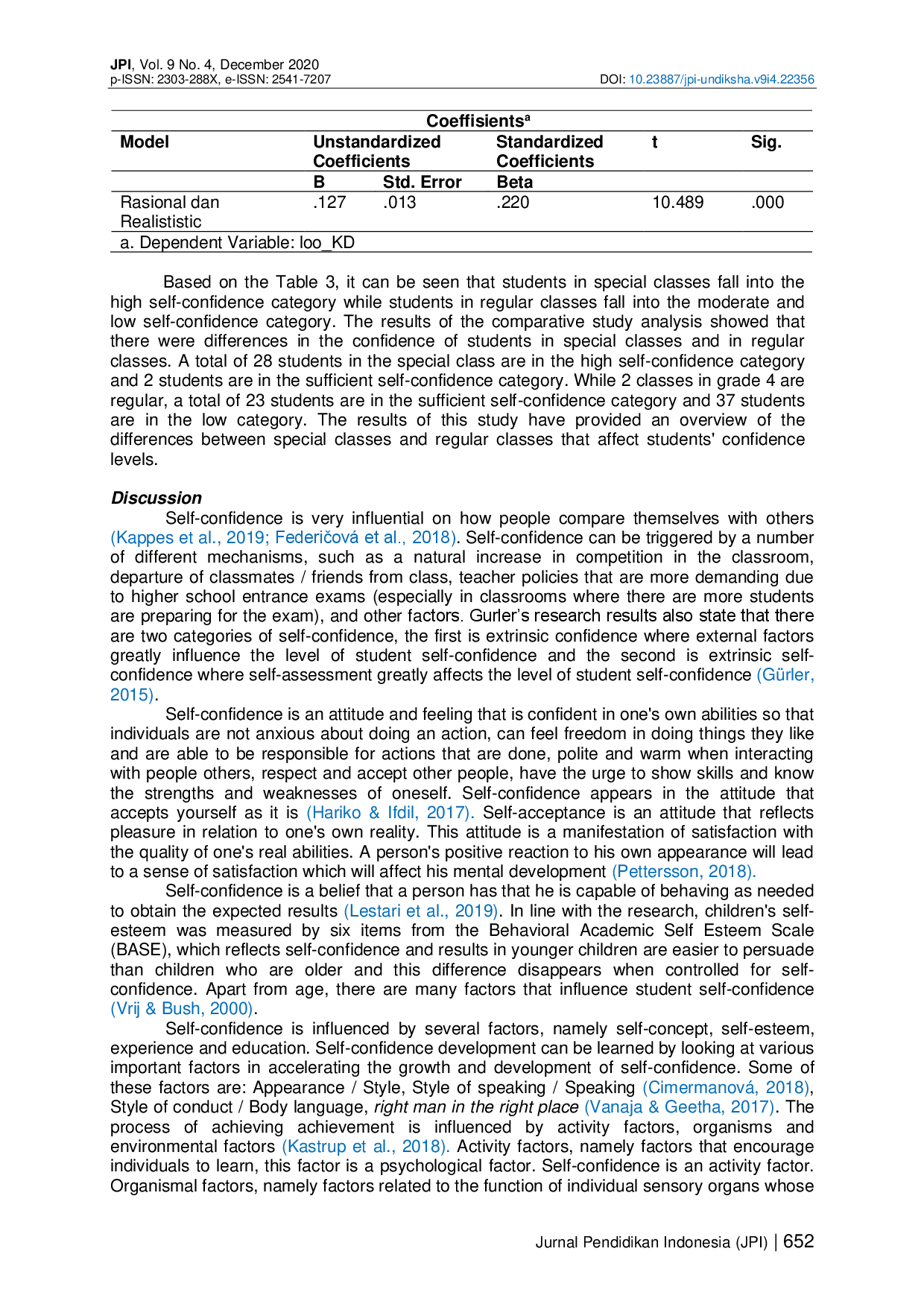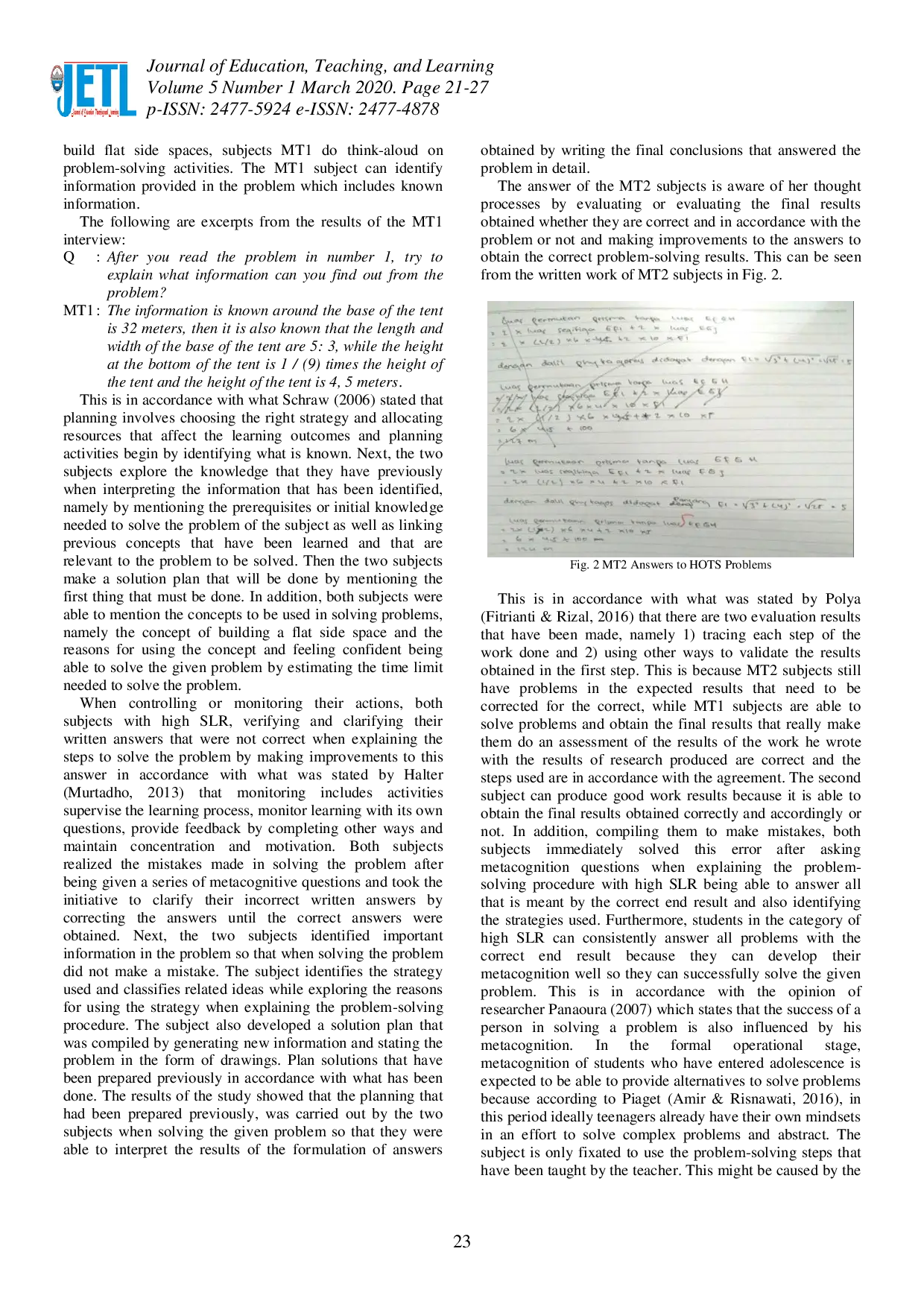APTKLHIAPTKLHI
Indonesian Journal of Forestry ResearchIndonesian Journal of Forestry ResearchIndonesia khususnya Kota Palangka Raya yang terletak di Kalimantan Tengah memiliki kawasan hutan dengan luas sekitar 241.736,25 hektar. Kawasan hutan tersebut mempunyai peranan penting bagi kelangsungan hidup manusia. Namun setiap tahunnya, kebakaran hutan selalu terjadi dan menimbulkan kerusakan hutan, berdampak pada kondisi lingkungan seperti kesehatan vegetasi dan kualitas udara. Penelitian ini bertujuan untuk mengidentifikasi kawasan kebakaran hutan dan dampaknya berdasarkan kesehatan vegetasi dan perubahan kualitas udara dengan menggunakan teknologi penginderaan jauh. Metode penginderaan jauh yang digunakan dalam makalah ini adalah indeks spektral kebakaran Normalized Burn Ratio 2 (NBR2) untuk identifikasi area terbakar, Enhanced Vegetation Index (EVI) untuk mengidentifikasi kesehatan vegetasi, dan PM2.5 untuk analisis kualitas udara. Data citra satelit Landsat-8 digunakan sebagai data primer untuk mengekstraksi area terbakar dan dampaknya. Area terbakar yang dihasilkan NBR2 menunjukkan akurasi keseluruhan yang tinggi yaitu 82,229%. Studi tersebut menunjukkan bahwa kebakaran hutan berdampak pada polusi udara dengan peningkatan besar dalam paparan PM2.5 setelah kebakaran hutan, dan penurunan kesehatan vegetasi, yang terjadi di sekitar area yang diidentifikasi sebagai area yang terbakar. Dengan hasil tersebut, identifikasi kawasan kebakaran hutan dan dampaknya dapat dipantau secara terus menerus menggunakan data penginderaan jauh guna meminimalkan dampak kebakaran hutan.
Forest fires in 2019 severely degraded vegetation health and increased PM2.5 levels, classifying air quality as not healthy.These findings highlight the significant environmental and public health impacts of the 2019 fire event.
First, perform a five‑year EVI time‑series analysis to quantify peat swamp forest recovery after fires. The analysis will reveal a clear vegetation‑health threshold that can trigger early fire‑impact alerts. Second, build a spatial model that combines fire‑occurrence data with detailed local land‑clearing practices. Include climatic variables such as pronounced dry peat layers to improve high‑risk period forecasting accuracy. Third, develop a hybrid remote‑sensing framework fusing Landsat‑8 and MODIS observations to refine NBR2 detection performance. The fusion will systematically correct water‑related misclassifications commonly seen in wet peatlands. Assessing these methods will provide policymakers with precise tools for targeting mitigation and prevention in Palangka Raya. Integrating vegetation dynamics, human activity patterns, and advanced sensor fusion directly addresses knowledge gaps highlighted by this study. The resulting strategy will support the construction of evidence‑based fire‑prevention plans specifically adapted to local environmental conditions. Overall, this comprehensive approach will enhance peat swamp forest resilience and ultimately safeguard community health and wellbeing.
- Radware Bot Manager Captcha. radware manager captcha apologize ensure keep safe please confirm human... doi.org///10.1088/1742-6596/1825/1/012087Radware Bot Manager Captcha radware manager captcha apologize ensure keep safe please confirm human doi 10 1088 1742 6596 1825 1 012087
- Using Landsat Spectral Indices in Time-Series to Assess Wildfire Disturbance and Recovery. landsat spectral... doi.org///10.3390/rs10030460Using Landsat Spectral Indices in Time Series to Assess Wildfire Disturbance and Recovery landsat spectral doi 10 3390 rs10030460
- The Optimal Threshold and Vegetation Index Time Series for Retrieving Crop Phenology Based on a Modified... doi.org///10.3390/rs11232725The Optimal Threshold and Vegetation Index Time Series for Retrieving Crop Phenology Based on a Modified doi 10 3390 rs11232725
- Strategy and Roadmap for Achieving Sustainable Development Goals in Serang City | Jurnal Bina Praja.... doi.org///10.21787/JBP.11.2019.219-235Strategy and Roadmap for Achieving Sustainable Development Goals in Serang City Jurnal Bina Praja doi 10 21787 JBP 11 2019 219 235
- On a Data-Driven Approach for Detecting Disturbance in the Brazilian Savannas Using Time Series of Vegetation... doi.org///10.3390/rs13244959On a Data Driven Approach for Detecting Disturbance in the Brazilian Savannas Using Time Series of Vegetation doi 10 3390 rs13244959
| File size | 1.11 MB |
| Pages | 12 |
| Short Link | https://juris.id/p-32 |
| DMCA | Report |
Related /
UGMUGM Namun, keterlibatan perusahaan dalam kontroversi ESG melemahkan pengaruh positif pengungkapan sosial dan tata kelola terhadap kinerja, sedangkan kontroversiNamun, keterlibatan perusahaan dalam kontroversi ESG melemahkan pengaruh positif pengungkapan sosial dan tata kelola terhadap kinerja, sedangkan kontroversi
UINUIN Studi ini menganalisis keterkaitan antara dimensi keagamaan dan rasionalitas ekonomi dalam proses legitimasi industri perbankan syariah di Indonesia. DenganStudi ini menganalisis keterkaitan antara dimensi keagamaan dan rasionalitas ekonomi dalam proses legitimasi industri perbankan syariah di Indonesia. Dengan
APTKLHIAPTKLHI Metode yang digunakan adalah quasi eksperimen dengan desain pretest-posttest control group design. Sampel penelitian terdiri atas 64 siswa kelas XI IPAMetode yang digunakan adalah quasi eksperimen dengan desain pretest-posttest control group design. Sampel penelitian terdiri atas 64 siswa kelas XI IPA
UNDIKSHAUNDIKSHA Data diperoleh dari kuesioner skala Likert yang mencakup pertanyaan terbuka yang disebar kepada 119 mahasiswa pendidikan bahasa Inggris. Lima aspek yangData diperoleh dari kuesioner skala Likert yang mencakup pertanyaan terbuka yang disebar kepada 119 mahasiswa pendidikan bahasa Inggris. Lima aspek yang
UGMUGM Spread bid-ask digunakan sebagai indikator informasi asimetris. Hasil empiris menunjukkan bahwa hanya variabel GRI dan SOCscr yang memiliki hubungan negatifSpread bid-ask digunakan sebagai indikator informasi asimetris. Hasil empiris menunjukkan bahwa hanya variabel GRI dan SOCscr yang memiliki hubungan negatif
STKIP SINGKAWANGSTKIP SINGKAWANG Penelitian ini bertujuan untuk mengetahui pengaruh model pembelajaran inkuiri terbimbing berbasis etnosains terhadap kemampuan berpikir kritis dan keterampilanPenelitian ini bertujuan untuk mengetahui pengaruh model pembelajaran inkuiri terbimbing berbasis etnosains terhadap kemampuan berpikir kritis dan keterampilan
STKIP SINGKAWANGSTKIP SINGKAWANG Meskipun jumlah guru perempuan di sekolah dasar terus meningkat, profesi ini sering terdevaluasi dari segi prestise sosial dan remunerasi. Artikel tinjauanMeskipun jumlah guru perempuan di sekolah dasar terus meningkat, profesi ini sering terdevaluasi dari segi prestise sosial dan remunerasi. Artikel tinjauan
UGMUGM Penelitian ini bertujuan untuk mengembangkan dan menguji model pembelajaran berbasis teknologi yang dapat meningkatkan partisipasi dan hasil belajar siswa.Penelitian ini bertujuan untuk mengembangkan dan menguji model pembelajaran berbasis teknologi yang dapat meningkatkan partisipasi dan hasil belajar siswa.
Useful /
IPBIPB Komposisi optimal bioplastik diperoleh pada sampel B dengan nisbah kulit pisang. Sampel tersebut menunjukkan nilai kekuatan tarik 10,9 MPa, pemanjanganKomposisi optimal bioplastik diperoleh pada sampel B dengan nisbah kulit pisang. Sampel tersebut menunjukkan nilai kekuatan tarik 10,9 MPa, pemanjangan
UNDIKSHAUNDIKSHA Perbandingan hasil belajar sebelum dan sesudah penggunaan menunjukkan peningkatan signifikan. Materi ini mengintegrasikan berbagai mata pelajaran ke dalamPerbandingan hasil belajar sebelum dan sesudah penggunaan menunjukkan peningkatan signifikan. Materi ini mengintegrasikan berbagai mata pelajaran ke dalam
UNDIKSHAUNDIKSHA Selama penelitian hanya difokuskan pada kelompok perbedaan kelas, sehingga faktor tambahan seperti jenis kelamin, variasi sekolah, dan efek jangka panjangSelama penelitian hanya difokuskan pada kelompok perbedaan kelas, sehingga faktor tambahan seperti jenis kelamin, variasi sekolah, dan efek jangka panjang
STKIP SINGKAWANGSTKIP SINGKAWANG Melalui survei dan observasi terhadap 120 anak di bawah delapan tahun, hasil menunjukkan hubungan signifikan antara jam penggunaan media sosial harianMelalui survei dan observasi terhadap 120 anak di bawah delapan tahun, hasil menunjukkan hubungan signifikan antara jam penggunaan media sosial harian

